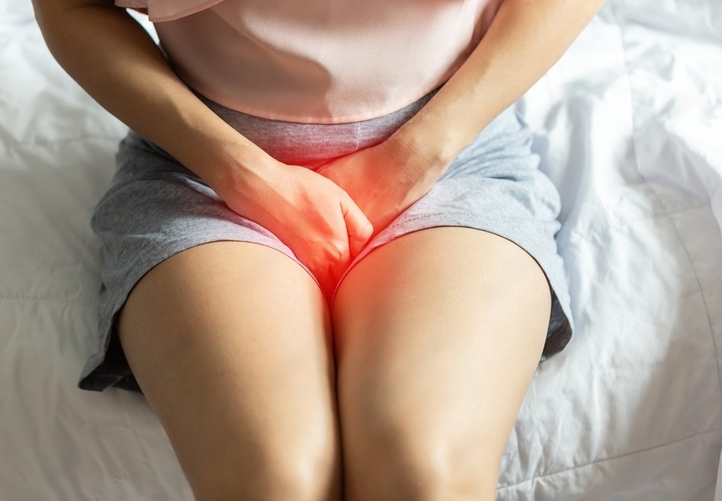Table of Contents
Ever flushed the idea of using a bidet down the toilet? Before you do, consider this: UTIs, or urinary tract infections, are a common struggle for many, causing discomfort, burning, and even pain. While we often stick to traditional methods like staying hydrated and wiping front to back, a lesser-known but potentially powerful tool in the UTI prevention arsenal exists: the bidet.
This blog post dives deep into the world of bidets and explores their potential role in keeping UTIs at bay. We’ll address common questions, dispel myths, and provide clear information on how bidets can contribute to a cleaner, healthier you.

What are Bidets and Why Should You Care?
Imagine a gentle stream of water washing away leftover residue after using the bathroom. That’s the magic of a bidet, a fixture attached to your toilet that offers a hygienic alternative to toilet paper. While bidets are popular in many parts of the world, they’re gaining traction in the West as people discover their numerous benefits.
But why should you care about UTIs? These infections, usually caused by bacteria entering the urinary tract, are prevalent, affecting millions worldwide. While often manageable, they can be painful and disruptive. So, exploring all avenues of prevention, including the humble bidet, makes sense.
Bidets and Hygiene: A Powerful Duo
Let’s talk hygiene. We know that good hygiene practices are crucial for preventing many infections, including UTIs. Traditionally, toilet paper does the job, but it can leave residue and potentially irritate sensitive areas.
Here’s where bidets step in. By using a gentle stream of water, they offer a more thorough clean, potentially reducing the presence of bacteria that could lead to infection. It’s like washing your hands after using the bathroom, but for your nether regions!
But wait, isn’t water harsh on your delicate skin? Not necessarily. Many bidets have adjustable water pressure and temperature, allowing for a personalized and comfortable experience. Plus, using water eliminates the need for harsh soaps or wipes, which can disrupt the natural balance of your microbiome.
Are Bidets More Sanitary Than Toilet Paper?
The debate rages on. While both methods have their place, bidets offer some clear advantages in terms of sanitation. Studies have shown that bidets are more effective at removing fecal matter, potentially reducing the risk of transferring bacteria to the urinary tract. This is especially beneficial for women, who have a shorter urethra, making them more susceptible to UTIs.
However, hygiene is a two-way street. To reap the full benefits of a bidet, proper use is key. Ensure the nozzle is clean, use plain water instead of soap, and pat dry with a clean towel afterwards.
Bidets and Bacteria: Friend or Foe?
One major concern some people have is the potential for bidets to spread bacteria. This fear stems from the misconception that the water splashes back and contaminates the urinary tract.
Rest assured, this is highly unlikely. Modern bidets have features like retractable nozzles and targeted streams that prevent water from going where it shouldn’t. As long as you maintain proper hygiene and use the bidet correctly, it poses no increased risk of infection.

How to Use a Bidet Safely to Avoid UTIs
Using a bidet is quite simple. Most attach to your existing toilet and allow you to control the water pressure and direction. Start with a low pressure and aim the stream away from sensitive areas. Pat dry with a clean towel and voilà!
Here are some additional tips for safe and effective bidet use:
- Keep the nozzle clean: Regularly follow the manufacturer’s instructions for cleaning the nozzle to prevent bacterial buildup.
- Avoid harsh soaps: Stick to plain water to maintain the natural pH balance of your intimate areas.
- Pat dry properly: Moisture can harbor bacteria, so pat dry thoroughly with a clean towel.
- Consult your doctor: If you have any concerns or specific medical conditions, talk to your doctor before using a bidet.
Bidets and Other UTI Prevention Methods: A Team Effort
Remember, bidets are not a magic bullet against UTIs. They work best when combined with other preventive measures like:
- Staying hydrated: Drinking plenty of water helps flush out bacteria from the urinary tract.
- Wiping front to back: This prevents bacteria from spreading from the anus to the urethra.
- Urinating frequently: Don’t hold your urine for too long, as this allows bacteria to multiply.
- Wearing cotton underwear: Breathable fabrics prevent moisture buildup, which can encourage bacterial growth.
- Cranberry juice and supplements: While research is ongoing, some studies suggest cranberry products may offer UTI prevention benefits for certain individuals.
Using a bidet alongside these established practices creates a multi-pronged approach to UTI prevention, potentially offering increased protection. Think of it as building a fortress against those pesky bacteria!
Benefits of Using Bidets in Addition to Other Methods
The advantages of adding bidets to your UTI prevention routine go beyond just improved hygiene. Here are some additional benefits:
- Reduced toilet paper usage: This is not only environmentally friendly but also saves money in the long run.
- Improved comfort and cleanliness: Many users find bidets more comfortable and refreshing than toilet paper, especially those with sensitive skin or hemorrhoids.
- Reduced reliance on wipes: Wipes can be harsh and contain chemicals that can irritate the skin. Bidets offer a gentler and more sustainable alternative.
- May help manage other conditions: For people with conditions like incontinence or mobility issues, bidets can provide increased independence and dignity.

Conclusion: Do Bidets Help Prevent UTIs?
While research on the direct link between bidets and UTI prevention is ongoing, the available evidence suggests they can be a valuable tool in your arsenal. Bidets offer improved hygiene, reduce the risk of bacterial transfer, and work well when combined with other established preventive measures.
Ultimately, the decision of whether or not to use a bidet is a personal one. However, for anyone looking to explore additional ways to maintain urinary tract health, bidets offer a promising and potentially life-changing option.
Who Can Benefit from Using a Bidet?
Anyone can benefit from using a bidet, especially those who:
- Experience frequent UTIs: If you find yourself battling UTIs often, a bidet could be a game-changer in reducing their frequency and severity.
- Have sensitive skin: Toilet paper can be harsh on delicate areas. Bidets offer a gentler and more soothing alternative.
- Have mobility issues: Bidets can provide increased independence and dignity for those with difficulty using toilet paper.
- Are environmentally conscious: Reducing toilet paper usage is a simple way to be more eco-friendly.
- Simply want a cleaner and more refreshing experience: Many users find bidets to be more comfortable and hygienic than traditional methods.
If you’re on the fence about trying a bidet, consider all the potential benefits it offers. You might be surprised by how much you enjoy the clean and refreshing feeling it provides, and how it contributes to your overall urinary tract health.
Are There Any Risks Associated with Using a Bidets?
As with any personal hygiene product, there are a few potential risks associated with using bidets. However, these risks are minimal and easily mitigated with proper use:
- Improper hygiene: If the bidet nozzle is not cleaned regularly, it could harbor bacteria and increase the risk of infection. Make sure to follow the manufacturer’s cleaning instructions.
- Incorrect usage: Using the bidet with too high of a pressure or aiming the stream in the wrong direction could irritate sensitive areas. Start with low pressure and experiment to find a comfortable setting.
- Medical conditions: For people with certain medical conditions, like urinary tract infections or bladder issues, it’s best to consult with a doctor before using a bidet.
By following these simple precautions, you can safely enjoy the benefits of using a bidet without any increased risk.
Final Thoughts
Bidets offer a unique and potentially powerful tool in the fight against UTIs. They promote better hygiene, reduce bacterial transfer, and work well alongside other preventive measures. While not a magic bullet, they can be a valuable addition to your UTI prevention routine, contributing to a cleaner, healthier, and more comfortable you.
So, are you ready to give bidets a try? With their numerous benefits and minimal risks, they might just be the key to unlocking a world of improved hygiene and reduced UTIs.
